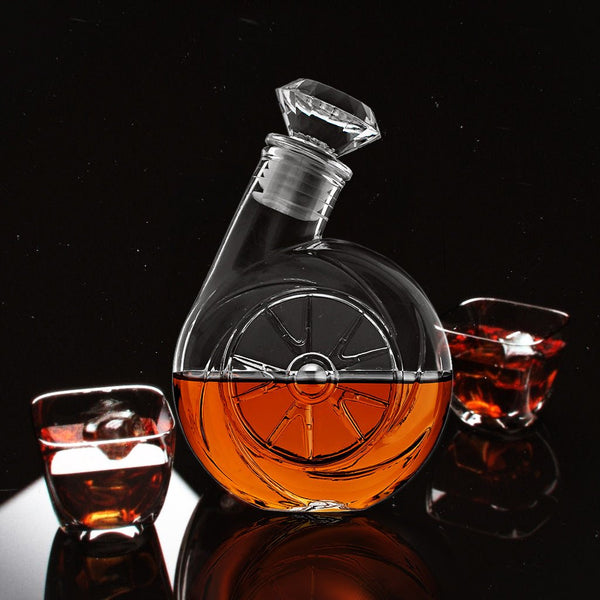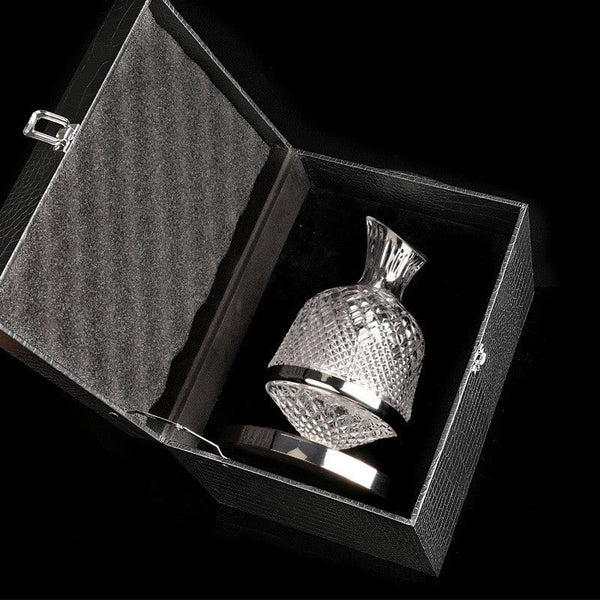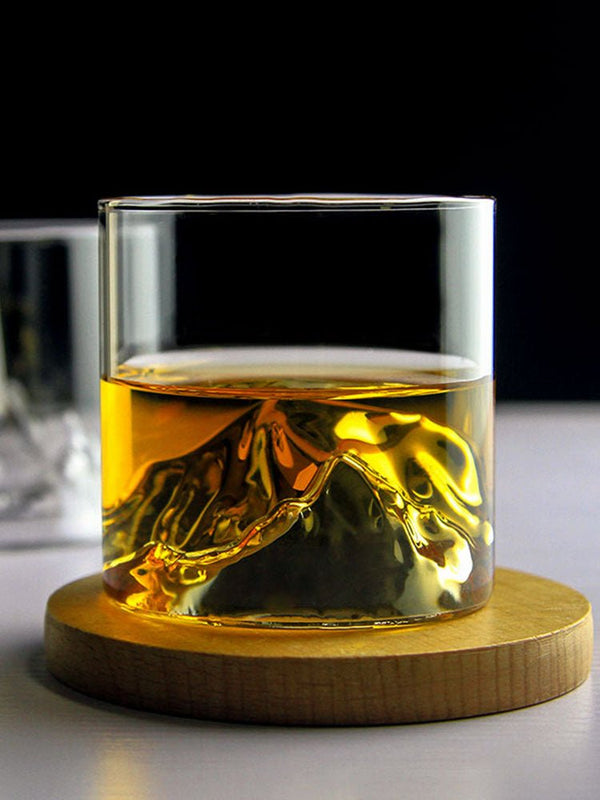How Whisky cars worked during prohibition
Products on sale
-
 Turbocharger Whiskey Decanter
Turbocharger Whiskey Decanter
- Regular price
- $42.99
- Sale price
- $42.99
- Regular price
-
$56.99 - Unit price
- per
Sold out -
 Crystal-cut Rotating Decanter
Crystal-cut Rotating Decanter
- Regular price
- from $119.81
- Sale price
- from $119.81
- Regular price
-
$160.00 - Unit price
- per
Sold out -
 Japanese Whisky Glass
Japanese Whisky Glass
- Regular price
- from $24.99
- Sale price
- from $24.99
- Regular price
-
- Unit price
- per
Sold out
Whisky cars: the secret wheels of prohibition
The Prohibition era, marked by the 18th Amendment, turned ordinary citizens and cunning entrepreneurs into clandestine operators.
From 1920 to 1933, the United States embarked on a moral and legal crusade against alcohol, culminating in a fascinating cat-and-mouse game between law enforcers and law evaders.
Among the latter, the operators of "whisky cars" became legendary.
These modified vehicles played a critical role in the smuggling and distribution of illegal alcohol, embodying both the ingenuity and the audacity of the time.
This article delves into how whisky cars worked, exploring their technical modifications, operational tactics, and the broader impact they had during Prohibition.
The origins of whisky cars
The Volstead Act, enacted to enforce the 18th Amendment, prohibited the manufacture, sale, and transport of alcoholic beverages. However, it did not curb the public's desire for alcohol, creating a lucrative black market.
Enterprising individuals quickly saw the opportunity to meet this demand through smuggling, leading to the birth of whisky cars.
These vehicles were modified to discreetly carry alcohol over long distances, often right under the noses of law enforcement.
Technical modifications of whisky cars
To succeed in their illegal ventures, bootleggers needed vehicles that were not only reliable but could also evade detection and outrun police if necessary.
The modifications made to these cars were ingenious:
Increased engine power: Many bootleggers opted to enhance their vehicles engine and mechanical capabilities. This often meant upgrading the carburetor, installing heavier-duty springs to handle the extra weight of the alcohol, and souping up the engine to ensure they could outrun police cars of the era.
Hidden compartments: Whisky cars were famous for their secret compartments where alcohol was hidden from view. These could be under the floorboards, within specially designed tanks, or even behind false panels. The aim was to make the cargo as inconspicuous as possible.
Reinforced chassis and suspension: To handle the additional weight of the alcohol, the cars chassis and suspension systems were often reinforced. This modification was crucial for maintaining vehicle performance and stability, even when loaded with heavy cargo.
Operational tactics of whisky runners
The drivers of whisky cars, often called "runners" or "bootleggers," employed various tactics to avoid detection and capture:
Traveling by night: Many bootleggers chose to transport their goods under the cover of darkness to reduce the likelihood of being spotted by law enforcement.
Using scout cars: Often, a scout car would drive ahead of the whisky car to look out for police checkpoints or patrols. If the scouts spotted trouble, they would signal back to the whisky car, usually with lights or predetermined signs, allowing the bootlegger to change course.
Elaborate routes and schedules: Whisky runners frequently changed their routes to avoid predictable patterns that could be tracked by the police. They also planned their schedules irregularly to keep law enforcement guessing.
Key routes and hotspots
Certain routes became infamous during Prohibition due to their heavy use by whisky cars.
These included roads leading from Canada and Mexico, where alcohol was legally produced, into the thirsty United States.
Urban centers such as Chicago, New York, and Detroit became hotspots for bootlegging activity, partly due to their geographical locations and partly due to their dense, hard-to-police urban environments.
The impact of whisky cars on prohibition enforcement
Whisky cars significantly challenged Prohibition enforcement.
Their speed and stealth not only made them a constant thorn in the side of the police but also a symbol of widespread resistance to the 18th Amendment.
The existence of these vehicles and their success in smuggling alcohol demonstrated the public's continued demand for alcoholic beverages, ultimately contributing to the growing sentiment against Prohibition.
Aftermath and legacy
The repeal of Prohibition in 1933 with the 21st Amendment did not end the legacy of the whisky cars.
Many of the mechanical innovations developed during this time influenced the auto industry long after.
Moreover, the era of whisky cars has been romanticized in films and literature, symbolizing a period of American history where ingenuity and the will to defy the law ran on four wheels.
Remembering Whisky cars
The whisky cars of the Prohibition era are a testament to the creativity and resilience of those who opposed the 18th Amendment.
Through technical modifications and clever tactics, bootleggers were able to build a vast network of alcohol smuggling that not only supplied a nation but also significantly undermined the federal law.
Today, whisky cars are remembered not just for their role in this historic period, but also for their contribution to automotive innovation and American cultural folklore.



